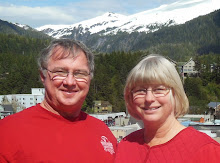Prairie Potholes, Pelicans, and People
5/13/14
The land was dotted with wind farms and at Dickinson, ND we
started seeing oil wells. Just past
Dickinson, we stopped in South Heart, ND to visit our nephew, Austin
Glaze. Austin’s step father is a truck
driver in the oil industry, and Austin and his sister moved in with him this
past New Year’s Eve in the middle of a very cold winter. The kids have lived in Florida all their
lives, so the cold was a shock to their systems. They live in a very nice duplex in a new
neighborhood that it still teaming with construction. Matt (Austin’s dad) decided to rent the
duplex at $3000 per month instead of the house across the street that was
renting for $5000 per month. Julie
(Austin’s sister) in in tenth grade at the local South Heart School which has
about 300 students from grades K-12. You
can see the school from their house.
Matt was off from work today but had gone to run some
errands, so we took Austin to lunch at the only restaurant in town. We had to unload some suitcases at the house,
and then Cindy crawled in the back and Austin squeezed himself into the front
seat of the Mustang. Thank goodness we
only had to drive a few blocks. When we
returned to the house, Matt was back and we visited with him for a while. He told us that the oil companies have been
issued 500 permits to drill new wells in the area. They can drill one well in about 45 days at a
cost of approximately ten million dollars, and it takes three years to pay for
itself. They are also building a new
refinery in nearby Dickinson. (When
driving through Dickinson, we saw several brand new extended stay hotels
advertising vacancies for $600 per week.)
Austin has been applying for jobs in the oil industry and hopes he will
get hired soon. Meanwhile, he is
supposed to start work soon at a small grocery store in Dickinson.
After a nice visit, we left Austin’s house about 2:00 p.m.
and continued west on I-94. We stopped
at a rest stop in the Theodore Roosevelt National Park at the edge of the
Badlands. Theodore Roosevelt first visited the Badlands in 1883 and became
alarmed by the damage that was being done to the land and its wildlife. When he became Present in 1901, he pursued
his interest in natural history by establishing the U.S. Forest Service,
proclaimed 18 national monuments, established five national parks and 51 wildlife
refuges. Roosevelt was later honored
with this national park that honors the memory of him as a great
conservationist. We walked out to the
Painted Canyon overlook and saw a panorama of broken topography in its colorful
hues. We also saw a small herd of bison
and poopy evidence of their presence all around the visitor’s center.
We arrived in Miles City, Montana at about 4:45 p.m. and called it quits for the day.

.JPG)
.JPG)
.JPG)
.JPG)
.JPG)
.JPG)
.JPG)
.JPG)

.JPG)

.JPG)

.JPG)
.JPG)
.JPG)
.JPG)
.JPG)

.JPG)
.JPG)


0 Comments:
Post a Comment
Subscribe to Post Comments [Atom]
<< Home